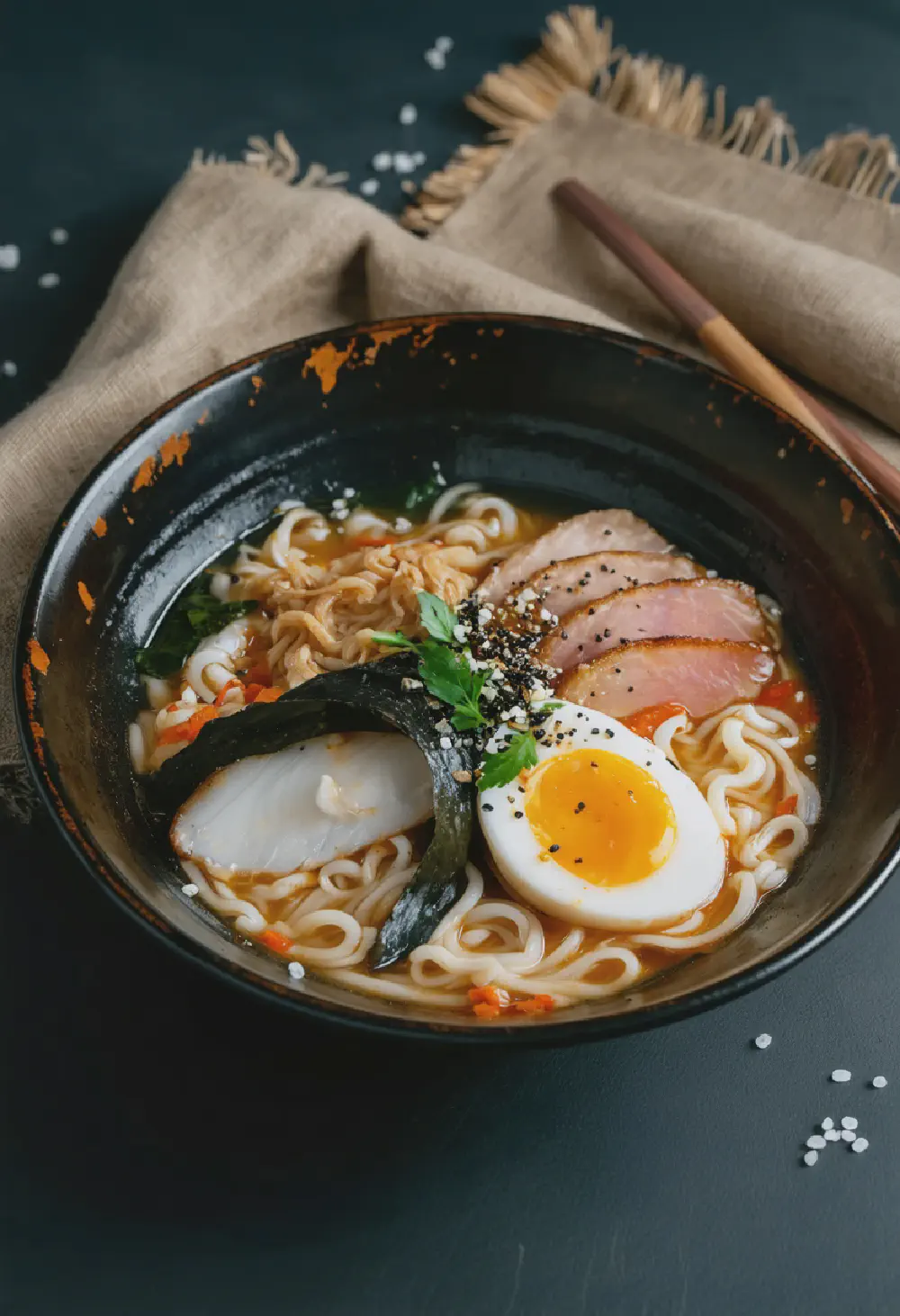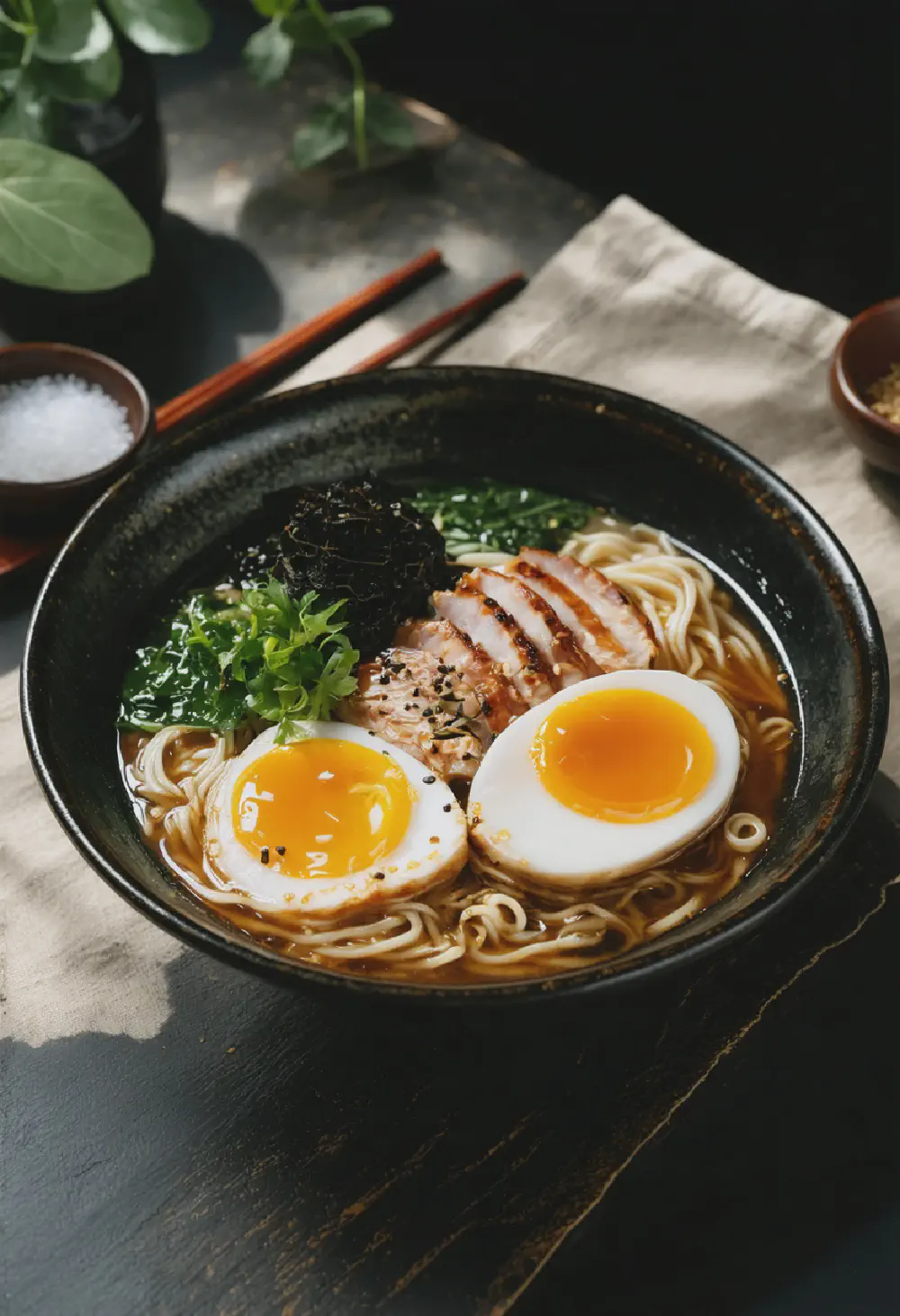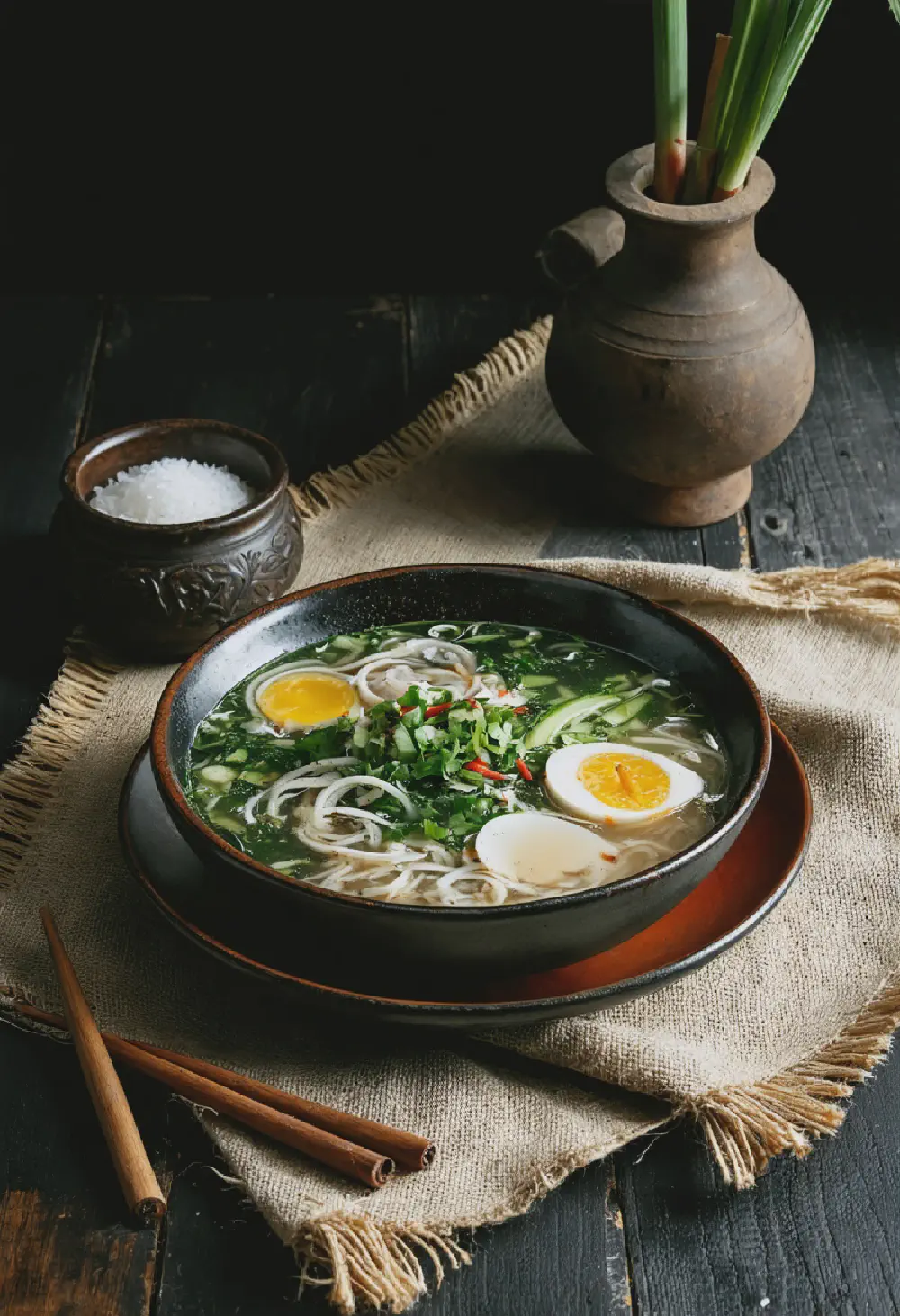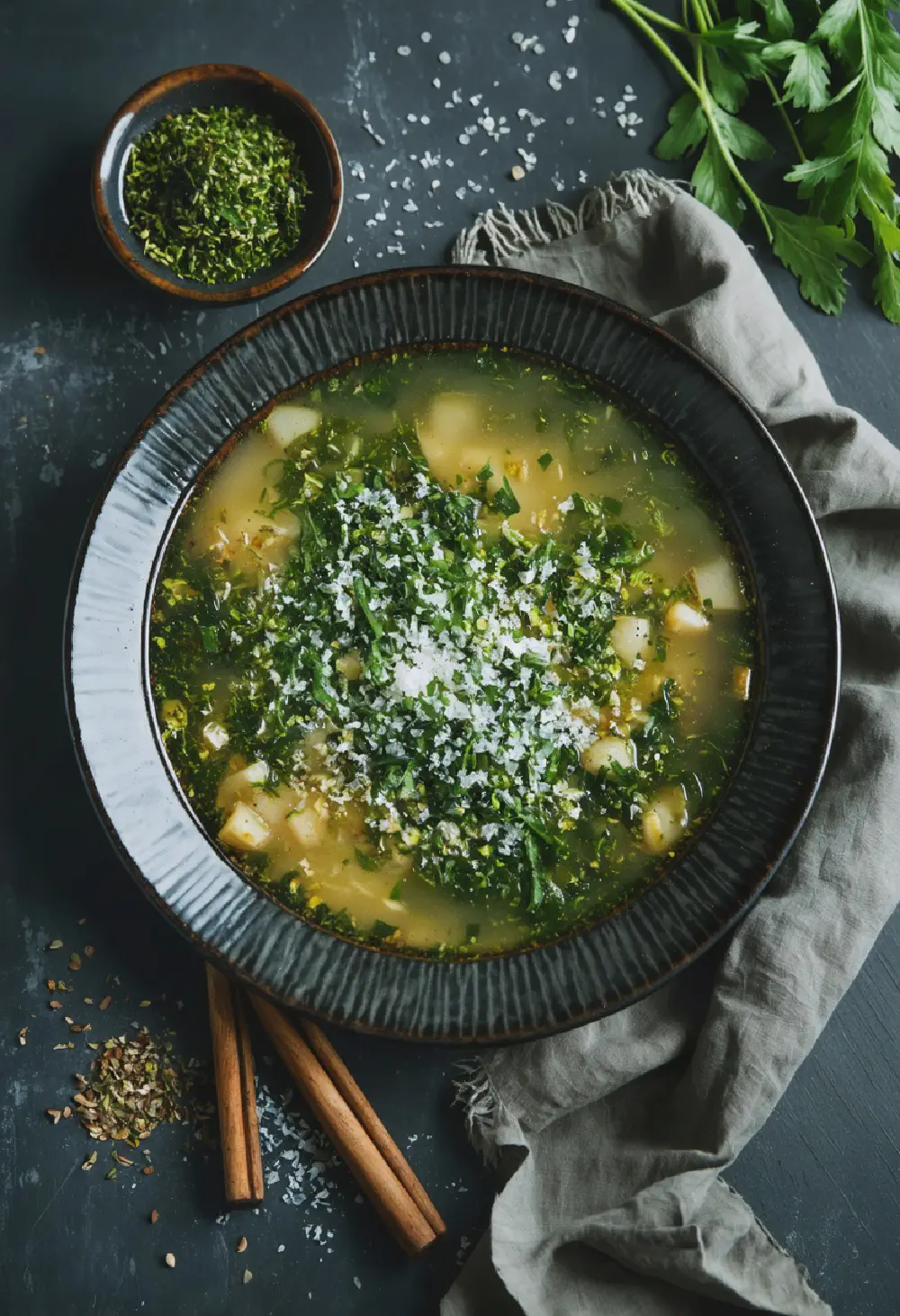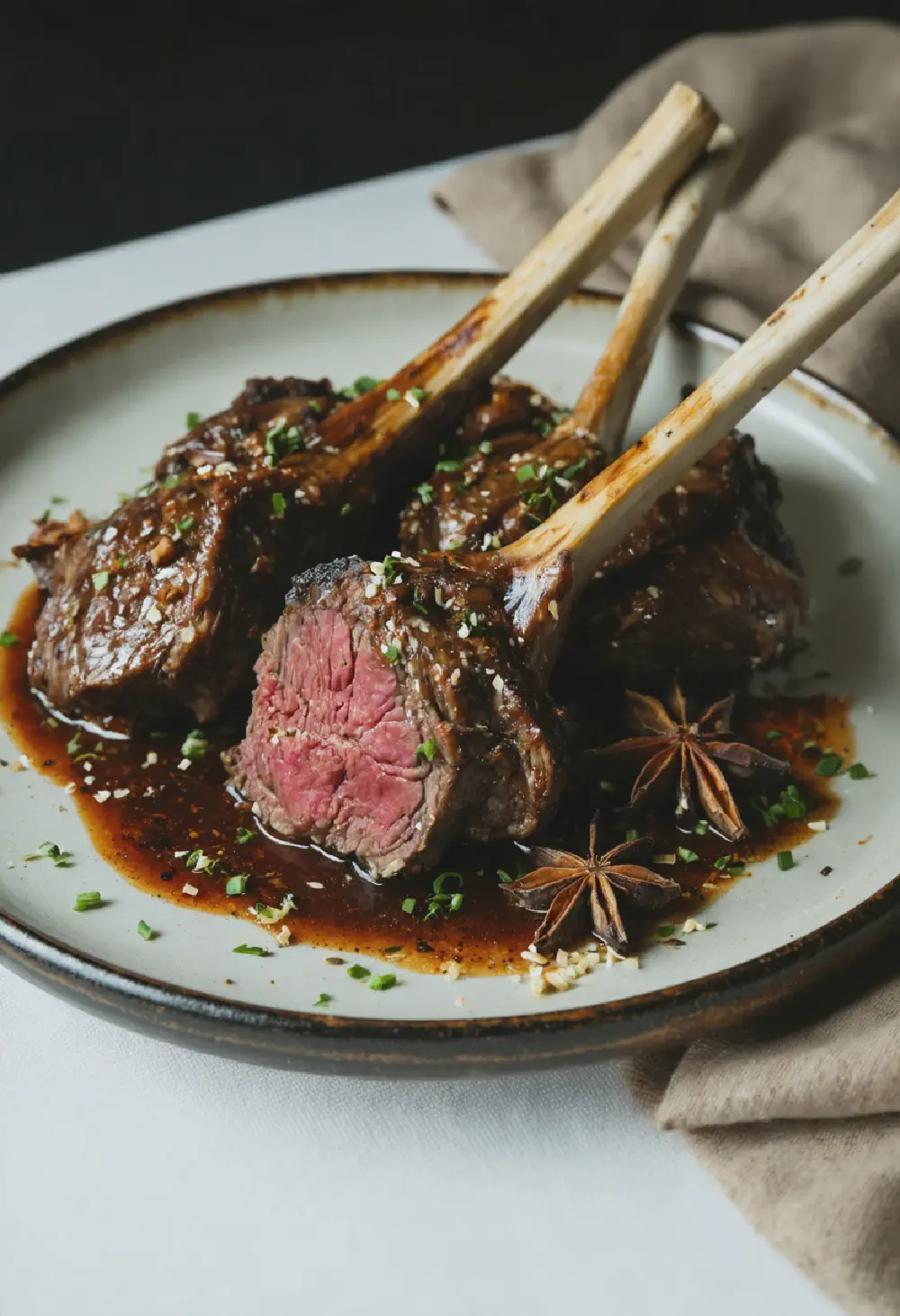Authentic Japanese Ramen
30M
3H and 30M
- Makes 4
- 4 servings of fresh ramen noodles
- 1 kg pork belly
- 4 cloves garlic, minced
- 1 thumb-sized piece of ginger, sliced
- 1 onion, chopped
- 2 liters chicken or pork stock
- 1/4 cup soy sauce
- 2 tbsp sake
- 1 tbsp mirin
- 4 soft-boiled eggs
- 4 sheets of nori
- 1 cup sliced green onions
- 1 cup menma (fermented bamboo shoots)
- 1 cup bean sprouts
- 1/2 cup corn kernels
- Prepare the Chashu Pork: Roll the pork belly and tie it with kitchen twine. In a pot, sear the pork belly on all sides. Add garlic, ginger, and onion, then pour in the stock, soy sauce, sake, and mirin. Simmer for 2-3 hours until tender. Let it cool in the broth, then slice.
- Make the Broth: Strain the pork cooking liquid into a clean pot. Simmer to reduce and concentrate the flavors. Adjust seasoning with more soy sauce or salt if needed.
- Cook the Noodles: Cook the ramen noodles according to package instructions until al dente. Drain well.
- Assemble the Ramen: Divide the noodles into four bowls. Pour the hot broth over the noodles. Top each bowl with slices of chashu pork, a soft-boiled egg, nori, green onions, menma, bean sprouts, and corn.
- Serve immediately and enjoy your authentic Japanese ramen!
Authentic Japanese Ramen: A Deep Dive into Its History, Taste, and Cultural Significance
History of Authentic Japanese Ramen
The history of authentic Japanese ramen is as rich and complex as its flavors. Originating in China, ramen was introduced to Japan in the late 19th century, where it quickly evolved into a beloved national dish. The first ramen shop, Rairaiken, opened in Tokyo in 1910, marking the beginning of ramen’s journey to becoming a staple of Japanese cuisine. Over the decades, ramen has transformed from a simple noodle soup to a culinary art form, with regional variations and specialized ramen shops known as “ramen-ya” popping up across Japan. Today, authentic Japanese ramen is celebrated worldwide, with enthusiasts traveling to Japan to experience its diverse and delicious iterations.
Taste Profile of Authentic Japanese Ramen
Authentic Japanese ramen is renowned for its intricate taste profile, which balances savory, umami, and sometimes sweet flavors. The heart of ramen is its broth, often made from pork bones simmered for hours to extract a deep, rich flavor. This is complemented by the tender chashu pork, which adds a melt-in-your-mouth texture and a subtle sweetness. The noodles, cooked to perfection, provide a satisfying chewiness that contrasts beautifully with the broth. Additional toppings like menma (fermented bamboo shoots), nori (seaweed), and a soft-boiled egg further enhance the dish’s complexity, making each bowl of authentic Japanese ramen a harmonious blend of flavors and textures.
Cultural Significance of Authentic Japanese Ramen in Japanese Cuisine
In Japanese cuisine, authentic Japanese ramen holds a special place, reflecting the country’s culinary innovation and regional diversity. Ramen is more than just a meal; it’s a cultural phenomenon that brings people together. From bustling ramen-ya in Tokyo to family-owned shops in rural areas, ramen is a social experience, often enjoyed with friends or as a comforting solo meal. The dish’s adaptability has led to countless regional variations, each telling a story of local ingredients and traditions. For instance, Sapporo ramen from Hokkaido is known for its rich miso broth, while Hakata ramen from Fukuoka features a lighter, pork-based tonkotsu broth. This diversity underscores ramen’s cultural significance, making it a beloved symbol of Japanese culinary heritage and a testament to the country’s love for food.
By exploring the history, taste profile, and cultural significance of authentic Japanese ramen, we gain a deeper appreciation for this iconic dish and its place within Japanese cuisine. Whether you’re a ramen enthusiast or a curious foodie, the world of authentic Japanese ramen offers endless flavors and stories to discover.
